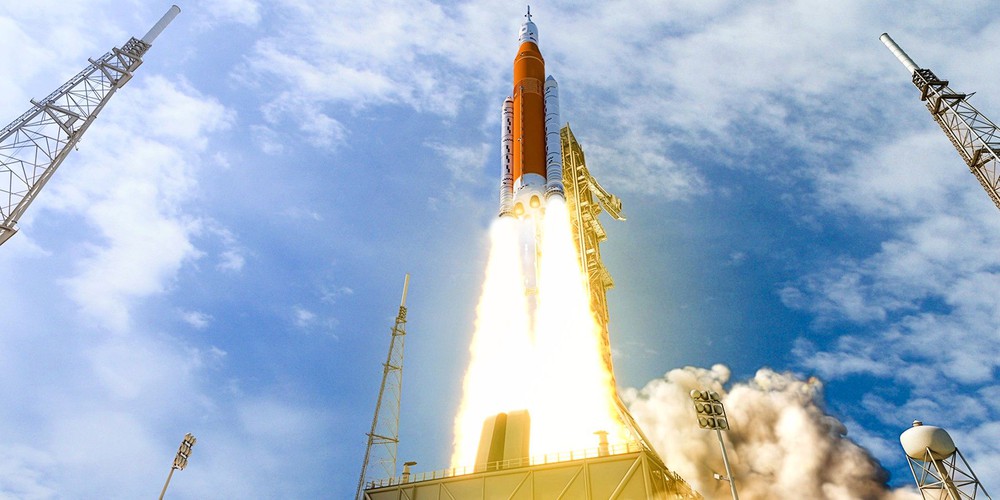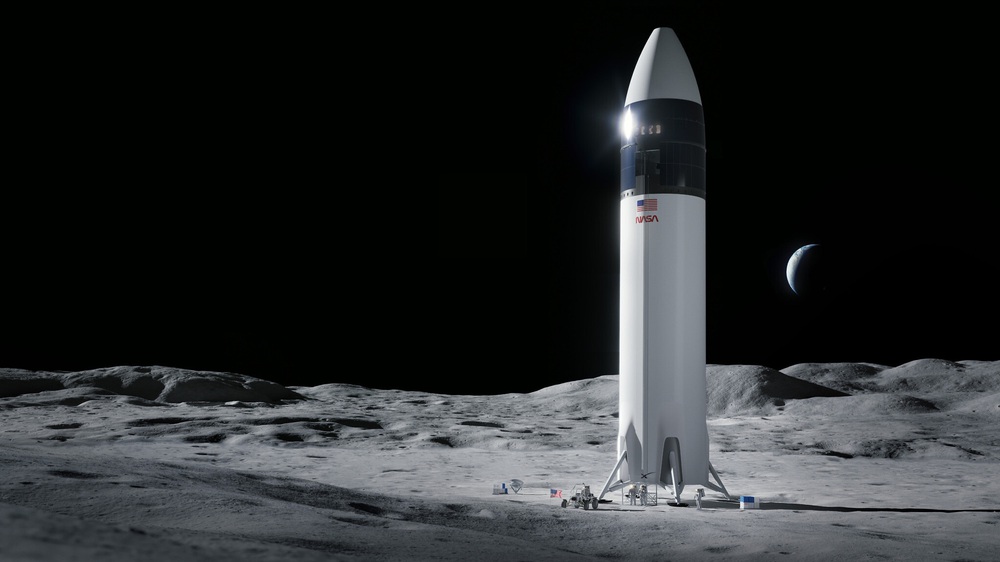SLS TEST RETURNED 2 TIMES
After NASA postpone the further test of 2.6 million liters of supercooled propellant for super rocket SLS (Space Launch System, also known as Super Moon Rocket) at the launch pad of Kennedy Space Center on April 3, 2022 and scheduled to test again on April 4, an incident occurred again. caused the April 4 test to continue to be postponed.
The reason for this delay was due to a ground equipment jam. [Lý do hoãn lần thứ nhất là do hệ thống sử dụng quạt để tạo áp suất cho bệ phóng di động và ngăn chặn các khí độc hại đã thất bại].
Specifically, NASA said, a stuck vent valve aloft on the SSL-enabled mobile launch pad structure forced NASA to stop for inspection before refueling for the final test of the test. pre-launch test for SLS.
Jeremy Parsons, NASA’s deputy director of ground systems, wrote in an update on Twitter following the test: “Due to vent valve problems, the launch director stopped testing for the day. The team is preparing to offload the LOX (liquid oxygen) and will start discussing the rotational speed of the SLS engine for the next day. next attempt”.

An illustration of SLS launching into space.
The trapped vent valve is located at a height of 49 meters on the mobile launcher, acting as both a rig and a launch pad for the SLS, said Jeremy Parsons.
Wednesday’s refueling attempt was NASA’s second attempt to fill the core stage of the 98-meter-tall 2.6-million-liter SLS rocket with supercooled liquid oxygen and liquid hydrogen propellant.
After being put on the launch pad by the giant crawler Crawler-Transporter 2 on March 17, 2022, the SLS super rocket was thoroughly tested by the NASA launch team before performing the final test overall. before SLS sets off to fly to the Moon, expected in the summer of 2022.
Before the final test is completed, the SLS must ensure that there are no errors during the refueling and launch countdown, NASA said.
Space said it is not clear if NASA is ready for a third refueling on April 5 or must stop to replenish propellant supplies and allow SLS crews and launch controllers to rest time.
After the pre-launch test was completed, NASA announced the time for SLS to set off for the Artemis 1 mission – part of the Artemis Program to bring people back to the Moon.
The Artemis program consists of 3 phases corresponding to 3 Artemis 1-2-3 missions.
– The Artemis 1 mission – scheduled to begin shortly after a successful pre-launch test – will use NASA’s first Space Launch System rocket to launch an unmanned Orion spacecraft around orbit the Moon for 3 months and then return to Earth.
– Artemis 2 mission will take place when Artemis 1 is successful. In 2024, NASA aims to launch the Orion spacecraft, then already manned, around the Moon.
– The Artemis 3 mission is expected to take place in 2025, when two astronauts (one female, one male) will land on the surface of the Moon.
NASA’s HUGE budget
In the relevant context, Theverge Citing a new budget document released by the White House, US President Joe Biden is asking Congress to spend $26 billion on NASA in 2023, about $2 billion more than the space agency has paid. received for the current financial year.
If the $26 billion figure is approved, a third of that budget (about $9 billion) will go to NASA’s Artemis Program – NASA’s ambitious initiative to return humans to the Moon.
The $24 billion NASA currently has in 2022 is using for the following programs:
Currently, about $7.5 billion is being earmarked for the Artemis Program, which aims to put the first woman and first person of color on the Moon as early as 2025. Part of that funding will go to the Moon. devoted to the development of a new lunar lander capable of bringing humans to the lunar surface and back to Earth.
In order to return humans to the Moon in the 21st century (since the 20th century moon landings in the Apollo Program), NASA has built 3 important works: (1, 2) The first two include consists of a super rocket called Space Launch System, or SLSand a manned spacecraft named Orion. This pairing has been in development for decades and is designed to work together to send humans to the Moon. (3) The third important item needed to complete the journey is a Moon lander.
In 2021, NASA awarded SpaceX a $2.9 billion contract to develop the company’s new Starship vehicle into a Moon lander for the Artemis Program.

This illustration provided by SpaceX shows the design of the SpaceX Starship human lander that will carry the first NASA astronauts to land on the lunar surface under the Artemis Program. Photo: SpaceX / NASA via AP
Just last week, however, NASA announced plans to partner with another commercial company to develop a second lunar lander. According to NASA budget documents, about $1.486 billion is being allocated to human landing systems.
Meanwhile, about 779 million USD is spent developing the Lunar Space Station called Lunar Gateway – orbiting the Moon. The Lunar Gateway is used as a hub for the Artemis Program, where astronauts can live and train before descending to the lunar surface. The first part of the Lunar Gateway is expected to launch in 2024 at the earliest.
In addition, NASA is looking to develop robotic probes on the Moon to help better understand the topography of the Moon. One such mission includes the VIPER probe to “investigate ice deposits that could provide fuel and oxygen for future astronauts”.
In addition to the Artemis Program, the White House is giving away $224 million to encourage the development of new commercial space stations in Low Earth Orbit (LEO), where the International Space Station (ISS) is currently located.
Also in this $24 billion budget, nearly $8 billion is devoted to science, of which $2.4 billion is for Earth science and climate change research with satellite systems in orbit. Earth.
A budget of $822 million is being earmarked for NASA to carry out the retrieval of rock samples from Mars. In 2021, NASA successfully landed its Perseverance rover on the Red Planet.
Currently, NASA is working with Lockheed Martin and the European Space Agency (ESA) to develop a suite of vehicles that can return those samples back to Earth so that scientists can study them in a safe way. in more detail and potentially understand whether Mars was once inhabited.
Source: Space, The Verge
at Blogtuan.info – Source: Soha.vn – Read the original article here



